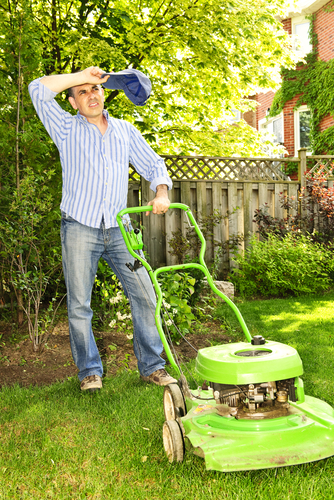Key Takeaways
Lawn aeration benefits:- Improved nutrient and water absorption: Aeration creates channels in compacted soil, enhancing movement of water and nutrients to grassroots.
- Root growth facilitation: Reduces soil compaction, allowing roots to grow more freely.
- Thatch management: Helps break down thatch, preventing it from blocking water and nutrients from reaching the soil.
If you are like most homeowners, you probably know when to water, mow, and fertilize your lawn. The problem is, with the compacted, dry soil we have here in Nevada, most of the nutrients we put on our lawns don't actually reach the soil. This is why aeration is such an important component to lawn maintenance.
There are two common questions we want to answer for you about lawn aeration - what is aeration and when does my lawn need aeration?
What Exactly Is Aeration?
Aeration is an essential part of a healthy lawn's maintenance. Aeration is a process wherein air channels are created within the soil to allow for more effortless movement of nutrients and water. This is especially necessary if the soil in your yard is compacted as it makes it harder for water and nutrients to infiltrate the ground. Even roots find it hard to grow in such a tight environment. If this is the kind of soil you have, erosion and nutrient loss often happen. To reduce soil compaction and improve overall water infiltration, you need to aerate your lawn.
When Does Your Lawn Need Aeration?
While not always necessary, here are some instances when you may want to aerate your lawn:
Highly Trafficked Lawns
If your lawn is highly trafficked by people or you have added heavy objects onto the lawn (think of areas of your lawn that are walked on consistently? ), more than likely, the ground is constantly getting compacted down. With the soil being compacted down, the nutrients that you want to enter into the soil don’t actually reach the places they need to go. Aeration creates those “holes” to let nutrients in.
When the Grass Was Laid Down Together with a Newly Constructed Home
When a home is built, the existing topsoil is stripped or buried. All that's remaining for the grassroots to grow on would be compacted subsoil. This holds minimal nutrients, and you need to aerate the lawn to ensure that grass will grow well. Be sure not to aerate while the grass is still initially trying to root. Let the grass become established before punching holes in fresh sod.
When the Grass Was Laid Down as Sod
Soil layering happens when there are different types of earth layered without mixing. This occurs when sod rolls are laid down over an already existing flat surface of the dirt. In such cases, a barrier develops naturally between the varying soil types, especially if the sod is made with sand that has more refined grains than coarse dirt underneath it. The water source is left behind because the finer-grained sand will hold the water, and the roots won't sink into coarse soil. Ultimately, you'll only get matted roots with no soil left for them to feed upon. As you can guess, grass will start dying then.
Grass Dries Out Easily and Feels Quite Springy
Do you notice that your grass dries out all the time and feels quite springy? If so, you probably have too much thatch or a layer of dead grass that has built up between the soil's surface and the green grass. Because thatch can also get compacted as the earth does, water and nutrients are kept from passing down to the grassroots, too.
Conclusion
Aeration is indeed a great way to help ensure a healthy lawn. Especially when the soil is compacted or when things are getting in the way of the nutrients that are supposed to be absorbed by the grass. It would be best to aerate during the growing season so that the grass can start repairing itself immediately and begin filling in the spaces left by the aeration. This will give your grass the best chance to get healthy and absorb water and nutrients needed for growth.
Cory's Lawn Service is a trusted team of professionals that offers lawn aeration and other lawn care services in Reno and nearby areas. Contact us today to learn more about our lawn care services!











